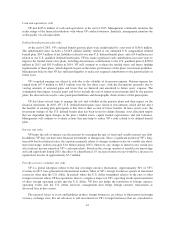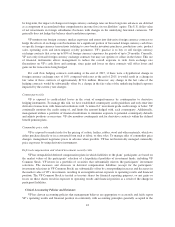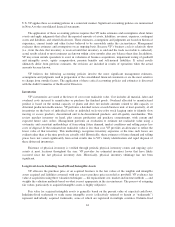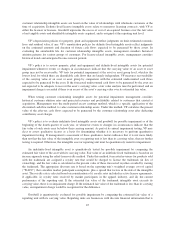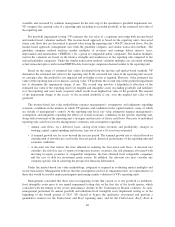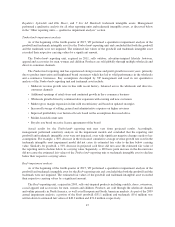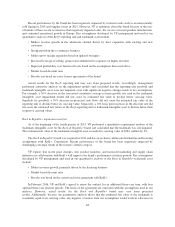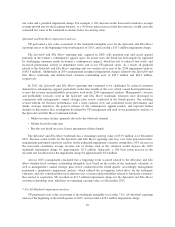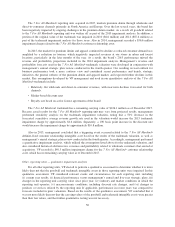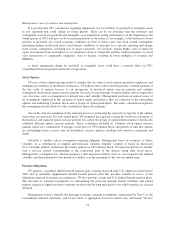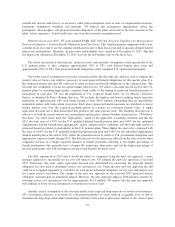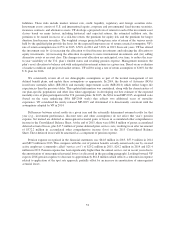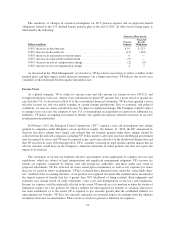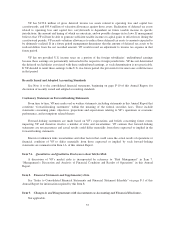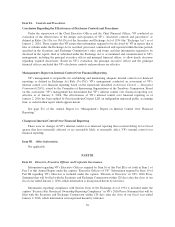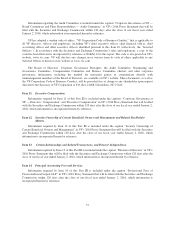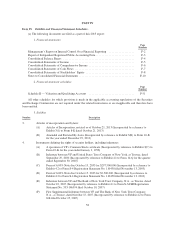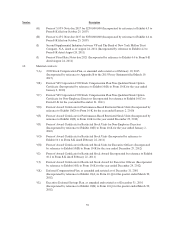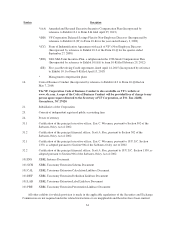North Face 2015 Annual Report Download - page 65
Download and view the complete annual report
Please find page 65 of the 2015 North Face annual report below. You can navigate through the pages in the report by either clicking on the pages listed below, or by using the keyword search tool below to find specific information within the annual report.Management’s use of estimates and assumptions
It is possible that VF’s conclusions regarding impairment or recoverability of goodwill or intangible assets
in any reporting unit could change in future periods. There can be no assurance that the estimates and
assumptions used in our goodwill and intangible asset impairment testing performed as of the beginning of the
fourth quarter of 2015 will prove to be accurate predictions of the future, if, for example, (i) the businesses do not
perform as projected, (ii) overall economic conditions in 2016 or future years vary from current assumptions
(including changes in discount rates), (iii) business conditions or strategies for a specific reporting unit change
from current assumptions, including loss of major customers, (iv) investors require higher rates of return on
equity investments in the marketplace or (v) enterprise values of comparable publicly traded companies, or actual
sales transactions of comparable companies, were to decline, resulting in lower multiples of revenues and
EBITDA.
A future impairment charge for goodwill or intangible assets could have a material effect on VF’s
consolidated financial position and results of operations.
Stock Options
VF uses a lattice option-pricing model to estimate the fair value of stock options granted to employees and
nonemployee members of the Board of Directors. VF believes that a lattice model provides a refined estimate of
the fair value of options because it can incorporate (i) historical option exercise patterns and multiple
assumptions about future option exercise patterns for each of several groups of option holders and (ii) inputs that
vary over time, such as assumptions for interest rates and volatility. Management performs an annual review of
all assumptions employed in the valuation of option grants and believes they are reflective of the outstanding
options and underlying Common Stock and of groups of option participants. The lattice valuation incorporates
the assumptions listed in Note N to the consolidated financial statements.
One of the critical assumptions in the valuation process is estimating the expected average life of the options
before they are exercised. For each option grant, VF estimated the expected average life based on evaluations of
the historical and expected option exercise patterns for each of the groups of option holders that have historically
exhibited different option exercise patterns. These evaluations included (i) voluntary stock option exercise
patterns based on a combination of changes in the price of VF Common Stock and periods of time that options
are outstanding before exercise and (ii) involuntary exercise patterns resulting from turnover, retirement and
death.
Volatility is another critical assumption requiring judgment. Management bases its estimates of future
volatility on a combination of implied and historical volatility. Implied volatility is based on short-term
(6 to 9 months) publicly traded near-the-money options on VF Common Stock. VF measures historical volatility
over a ten-year period, corresponding to the contractual term of the options, using daily stock prices.
Management’s assumption for valuation purposes is that expected volatility starts at a level equal to the implied
volatility and then transitions to the historical volatility over the remainder of the ten-year option term.
Pension Obligations
VF sponsors a qualified defined benefit pension plan covering most full-time U.S. employees hired before
2005 and an unfunded supplemental defined benefit pension plan that provides benefits in excess of the
limitations imposed by income tax regulations. VF also sponsors certain non-U.S. defined benefit pension plans.
The selection of actuarial assumptions for determining the projected pension benefit liabilities and annual
pension expense is significant due to amounts involved and the long time period over which benefits are accrued
and paid.
Management reviews annually the principal economic actuarial assumptions, summarized in Note L to the
consolidated financial statements, and revises them as appropriate based on current rates and trends. VF also
51



